Introduction to deep Q learning
Deep Reinforcement Learning in Python

Timothée Carayol
Principal Machine Learning Engineer, Komment
What is Deep Q Learning?
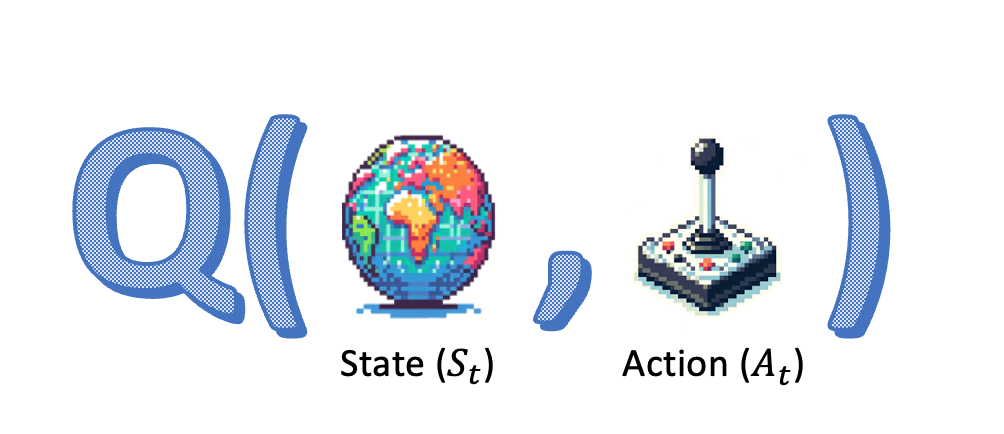
Q-Learning refresher
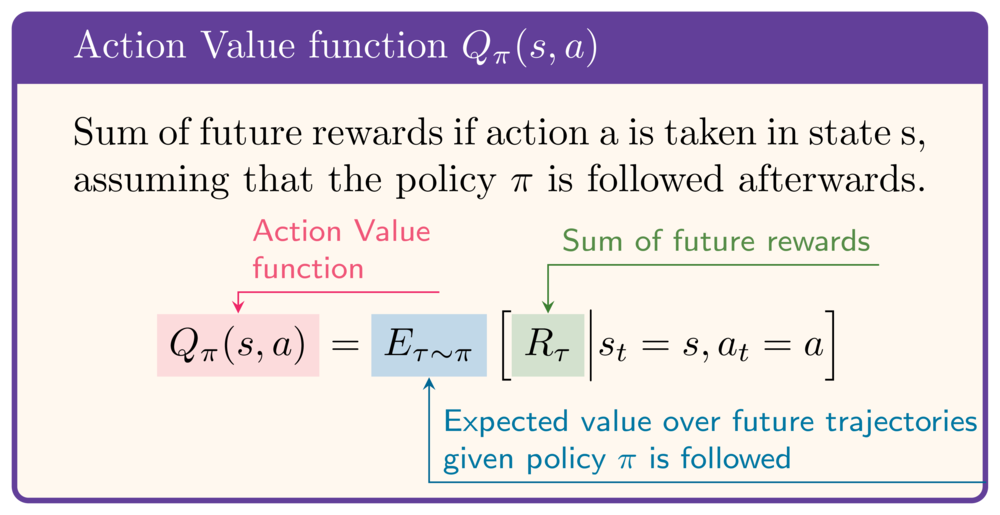
Knowledge of $Q$ would enable optimal policy: $$ \pi(s_t) = {\arg\max}_a Q(s_t, a) $$
Goal of Q-learning: learn $Q$ over time
Q-Learning refresher
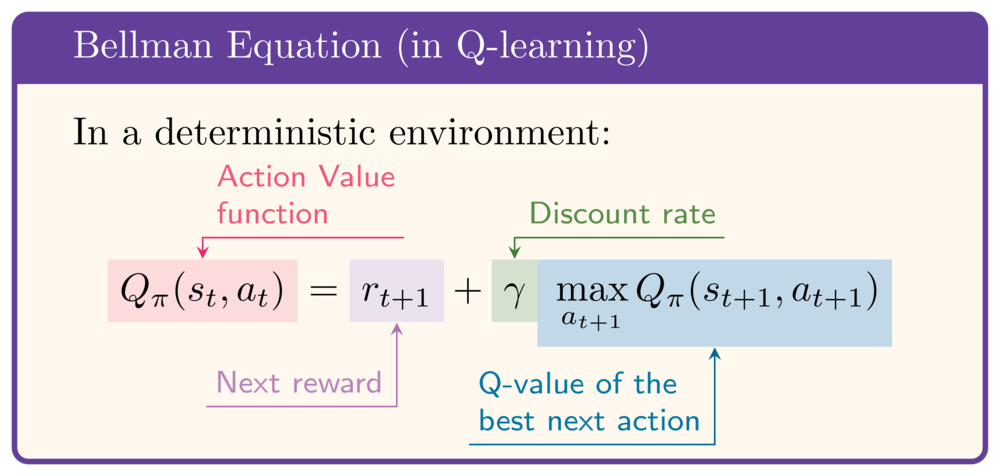
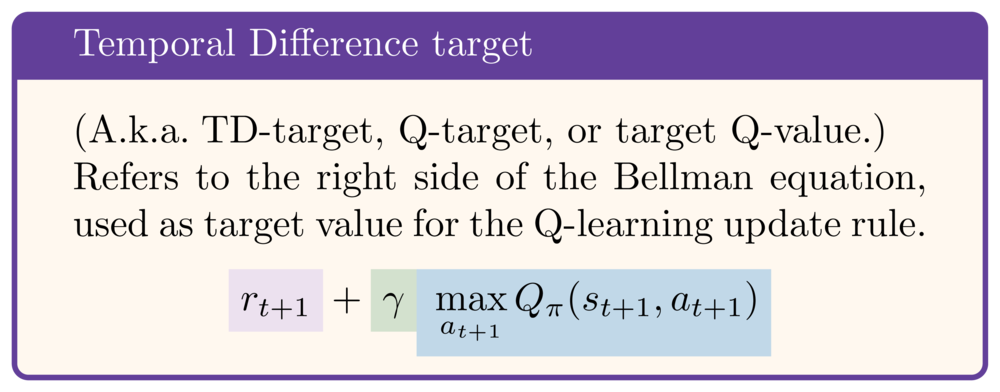
- Bellman equation: recursive formula for $Q$
- Right side of Bellman Equation: "TD-target"
- Use TD-target from Bellman Equation to update $\hat{Q}$ after each step

The Q-Network
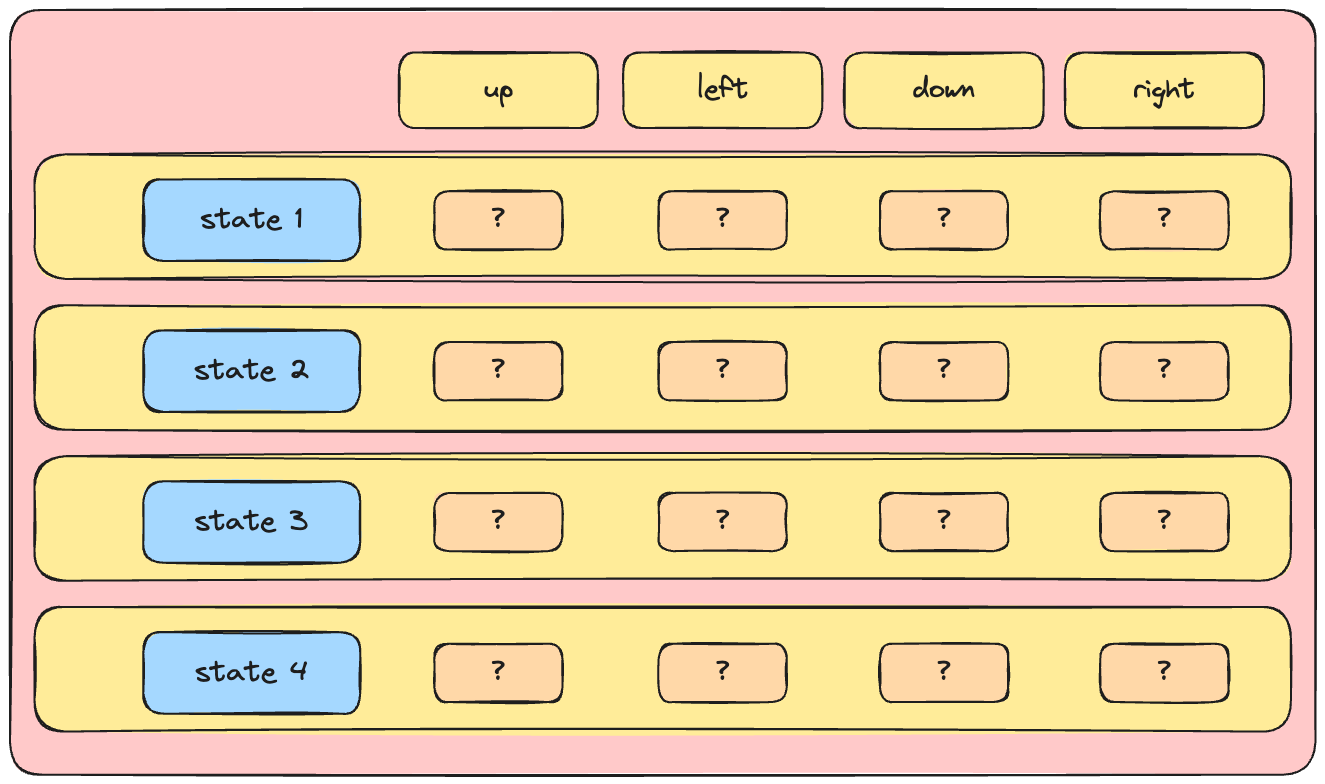
The Q-Network
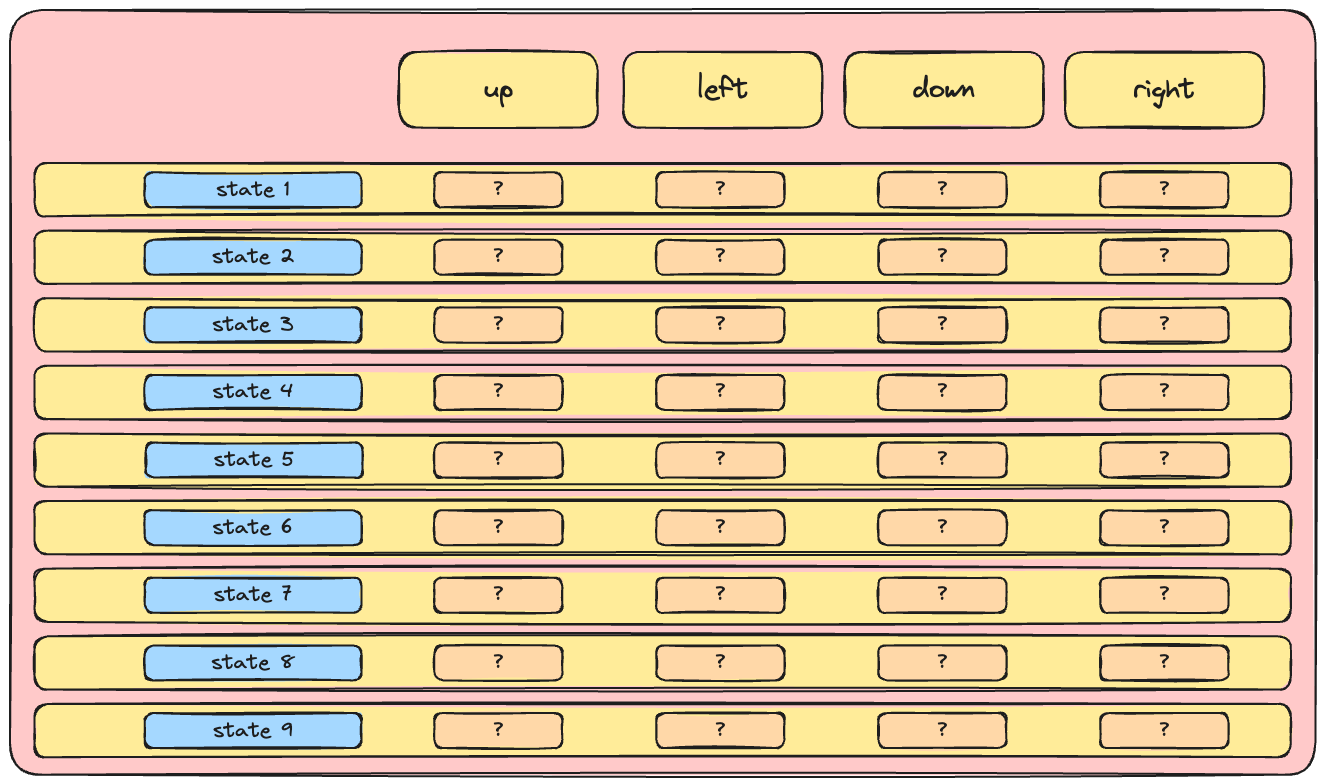
The Q-Network
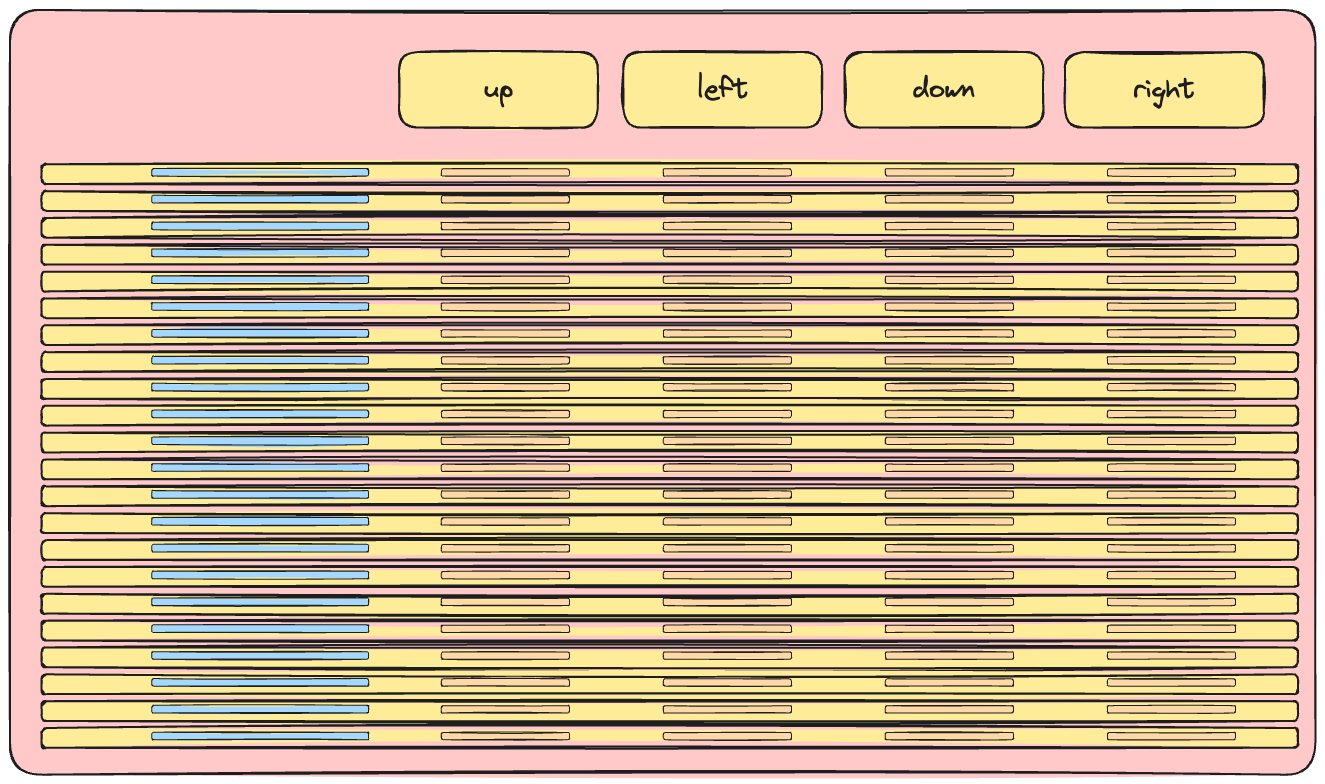
The Q-Network
- At the heart of Deep Q Learning: a neural network
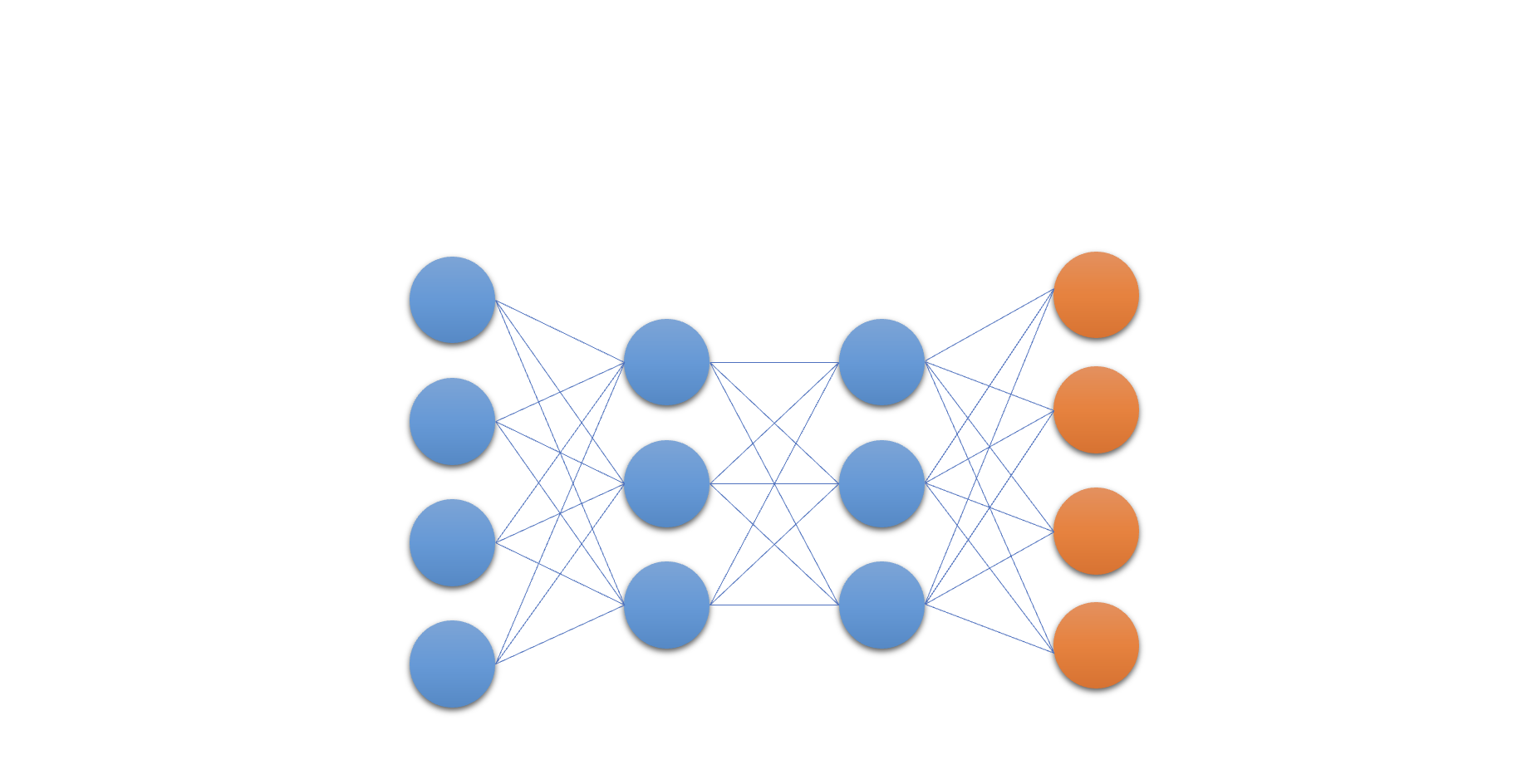
The Q-Network
- At the heart of Deep Q Learning: a neural network
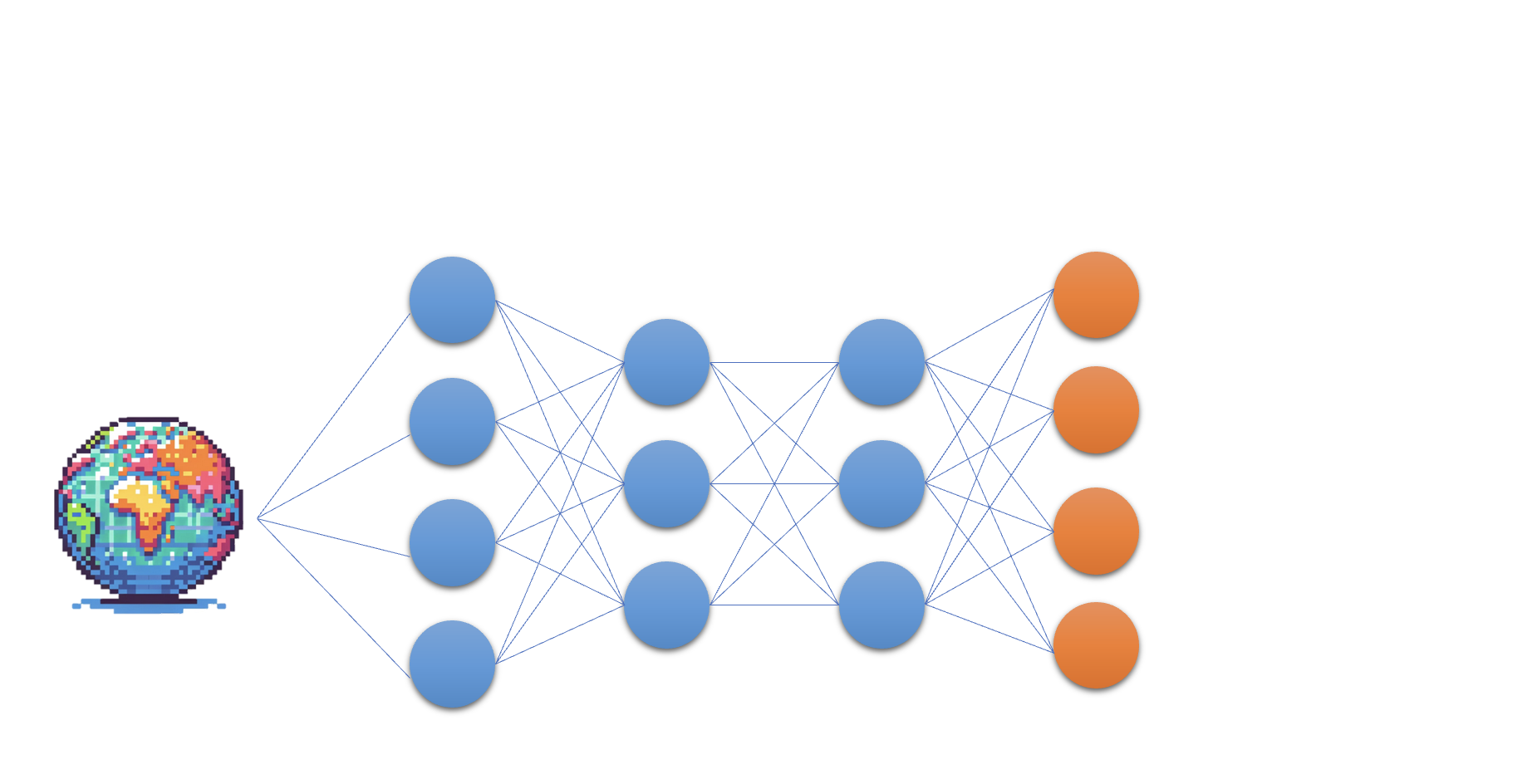
The Q-Network
- At the heart of Deep Q Learning: a neural network mapping state to Q-values
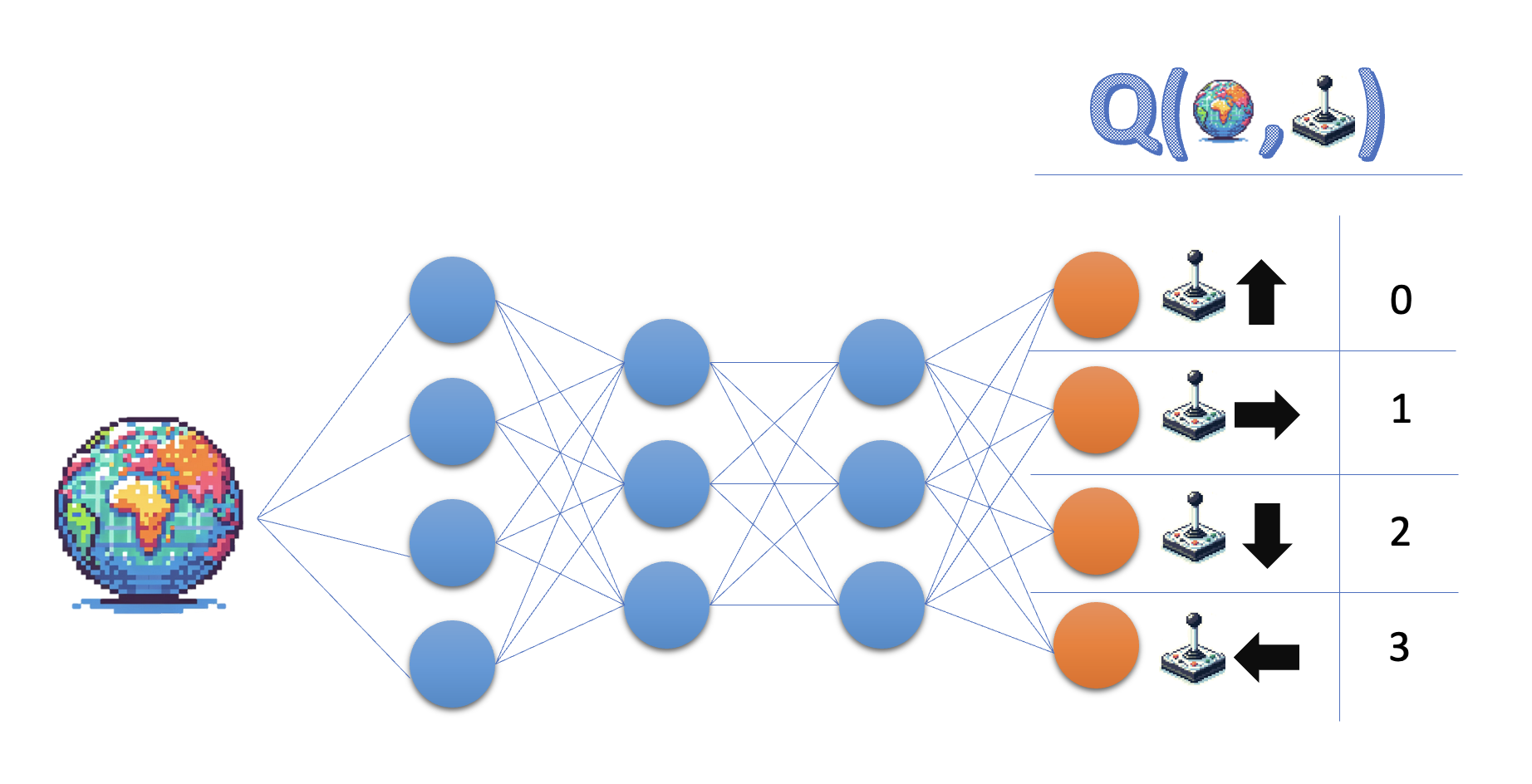
- A network approximating the action-value function is called 'Q-network'
- Q-networks are commonly used in Deep Q Learning algorithms, such as DQN.
Implementing the Q-network
class QNetwork(nn.Module):def __init__(self, state_size, action_size): super(QNetwork, self).__init__()self.fc1 = nn.Linear(state_size, 64) self.fc2 = nn.Linear(64, 64) self.fc3 = nn.Linear(64, action_size)def forward(self, state): x = torch.relu(self.fc1(torch.tensor(state))) x = torch.relu(self.fc2(x)) return self.fc3(x)q_network = QNetwork(8, 4)optimizer = optim.Adam(q_network.parameters(), lr=0.0001)
- Input dimension determined by state
Output dimension determined by number of possible actions
In this example:
- 2 hidden layers with 64 nodes each
- ReLu activation function
Let's practice!
Deep Reinforcement Learning in Python

